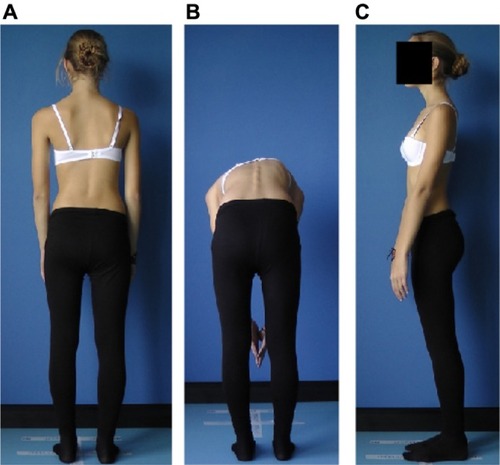Figures & data
Figure 1 Clinical signs of idiopathic scoliosis. (A) Trunk asymmetry and lateral deviation of the spine in the frontal plane, (B) trunk rotation in the horizontal plane, and (C) disturbances in physiological curvature in the sagittal plane (kyphosis flattening).

Table 1 Practical approach for adolescent idiopathic scoliosis according to the Society on Scoliosis Orthopaedic and Rehabilitation Treatment 2011 consensus document
Table 2 Treatment options implied by curve type according to the Lenke classification
Figure 2 Surgical treatment of idiopathic scoliosis using posterior instrumentation. (A and C) Preoperative anteroposterior and lateral standing radiographs of an adolescent girl with progressive idiopathic scoliosis Lenke type 6CN. (B and D) Postoperative standing radiograph of the patient after hybrid-type posterior instrumentation. Satisfactory correction, increased trunk height, and a well balanced spine are seen in both the sagittal and coronal planes.
